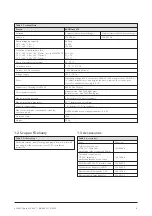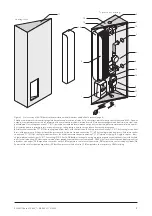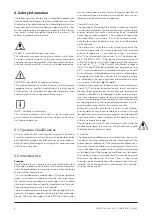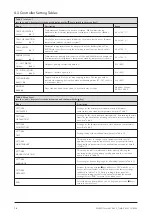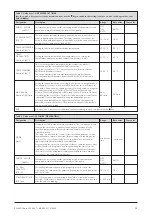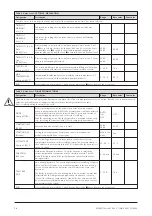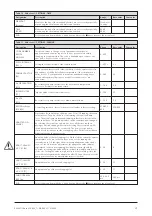
6
EN-RATIOfresh-250-400_TI-MA-0809-11214900
2. Safety Information
The following safety information is intended to protect you
from hazards and dangers that may suddenly occur when
the device is handled incorrectly, either deliberately or un-
knowingly. We differentiate between general safety infor-
mation, explained on this page, and special safety informa-
tion, which is listed throughout the text of this manual. The
following symbols are important!
DANGER – possibility of personal injury
The following may occur during assembly or installation:
hazardous electrical shock, scalding, bruising/contusions,
and other adverse health effects. Please comply with the in-
structions marked with this symbol in the documentation.
CAUTION – possibility of property damage
This symbol indicates hazards that may result in damage to
components or a significant reduction of the functionality
of the system. Please follow the described assembly steps
and comply with the sequence of these steps.
NOTE – additional information
This symbol indicates useful notes, tips to make work
easier, and other information that may help you with the in-
stallation or operation.
2.1 Operator Qualifications
All tasks and activities involving the transport, installation,
as well as operation and servicing must be performed by
qualified technical personnel. We do not assume responsi-
bility or liability for damages resulting from noncompliance
with these instructions.
2.2 Intended Use
Function
Heated water from a storage tank is used with a plate heat
exchanger to prepare hot water with a constant tempera-
ture. The cooled down return water is layered into the lower
section of the storage tank.
This is controlled demand-dependent. Only when potable
water is withdrawn and detected by the single-jet meter,
the circulation pump feeds the exchanger with a variable
hot water volume stream from the storage tank so that a de-
fined tapping temperature is maintained.
The return temperature is the result of the storage tank tem-
perature, the pump speed, and the plate heat exchanger
design. The heat exchanger of the RATIOfresh freshwater
station is designed in such a way that the lowest possible re-
turn temperatures are reached, which exhibit only a minor
difference to the cold water temperature.
Thermal Disinfection
The Legionella Pneumophila Bacteria protection function
can be used to disinfect the entire hot water and circulation
piping network thermally and during freely selectable
times (day or week program). You choose between once
per week (Mon-Sun) or daily. This function serves to pre-
vent the formation of bacteria and viruses in the potable
water network.
The station uses an external relay output to activate the
buffer storage auxiliary or backup heating if the required
primary temperature (= disinfection temp. + hysteresis
dT
NH
) is not detected by the sensor T
buffer
. The display de-
picts “DISINFECTION.” If the required temperature exists
within the primary circuit (data logging with the tempera-
ture sensor “T
buffer
”), the thermal disinfection program
starts. The freely selectable disinfection temperature (e.g.
65 °C) is maintained across a settable time duration (e.g. 20
min) and across all flooded hot water and circulation pipes.
Unexpected malfunctions during the disinfection phase
are indicated to the user in plain text and additionally with a
visual signal (LED light,
fig. 10, no. 4
).
Potable water hygienists recommend a material tempera-
ture of 70 °C or higher for a duration of at least 3 minutes to
disinfect the piping network. The disinfection temperature,
however, should be a few degrees higher or the disinfec-
tion time somewhat longer to ensure proper disinfection
occurs. Do not forget to raise the branch lines to the hot wa-
ter tapping points to the required temperatures by with-
drawing water several times for several minutes.
Before activating the disinfection function, check whether
the hot water or circulation network can sustain such high
temperature stress (e.g. damaging galvanized steel pipes)
and whether the carbon hardness of the potable water is
within an acceptable range.
The hot water users are at risk of scalding injuries while the
disinfection program is running. The disinfection should
therefore be carried out at night.
Circulation
The temperature difference is calculated from the circula-
tion flow and return temperature and compared with the
preset nominal difference. If the temperature difference is
too small, the control detects an oversupply of the circula-
tion and reduces the output of the circulation pump based
on the deviation. If the temperature difference is too great,
the control increases the output of the circulation pump
based on the deviation. The mass flow is then varied
through a pulsed modulation of the pump output. If an ad-
justable return temperature is exceeded, the controller
switches the pump off.



